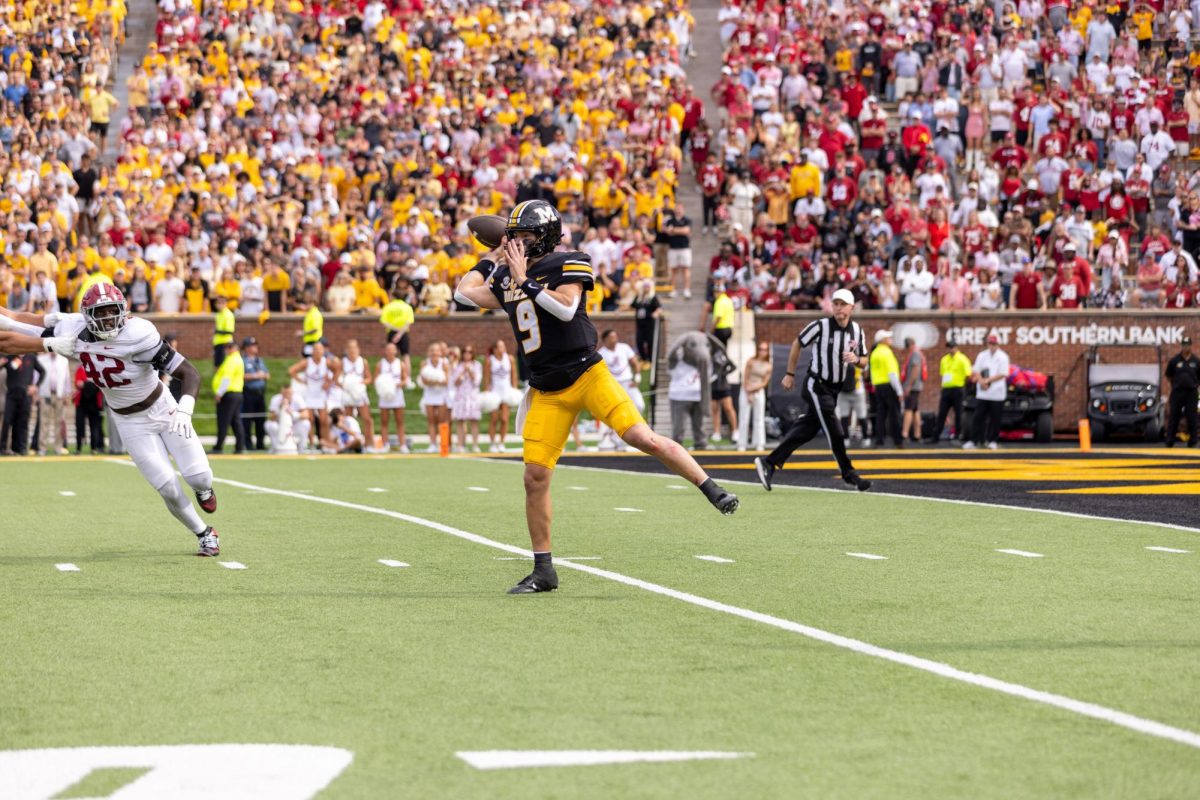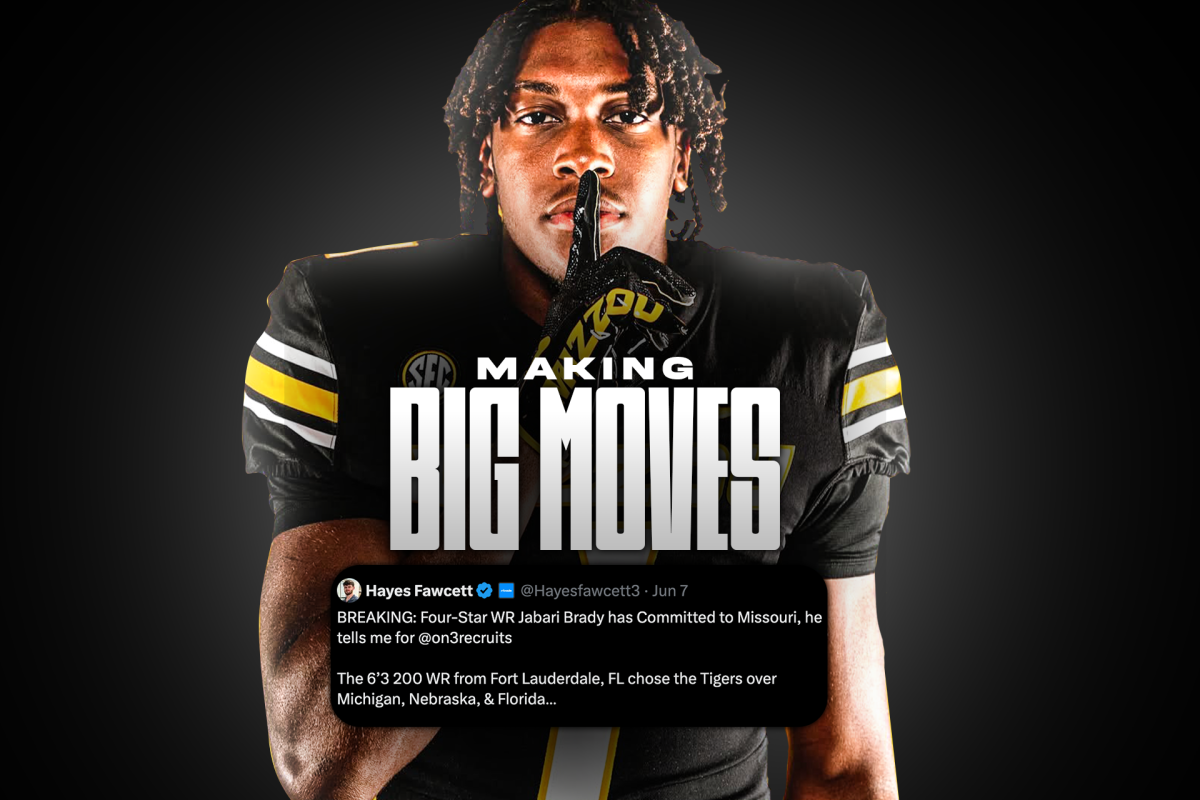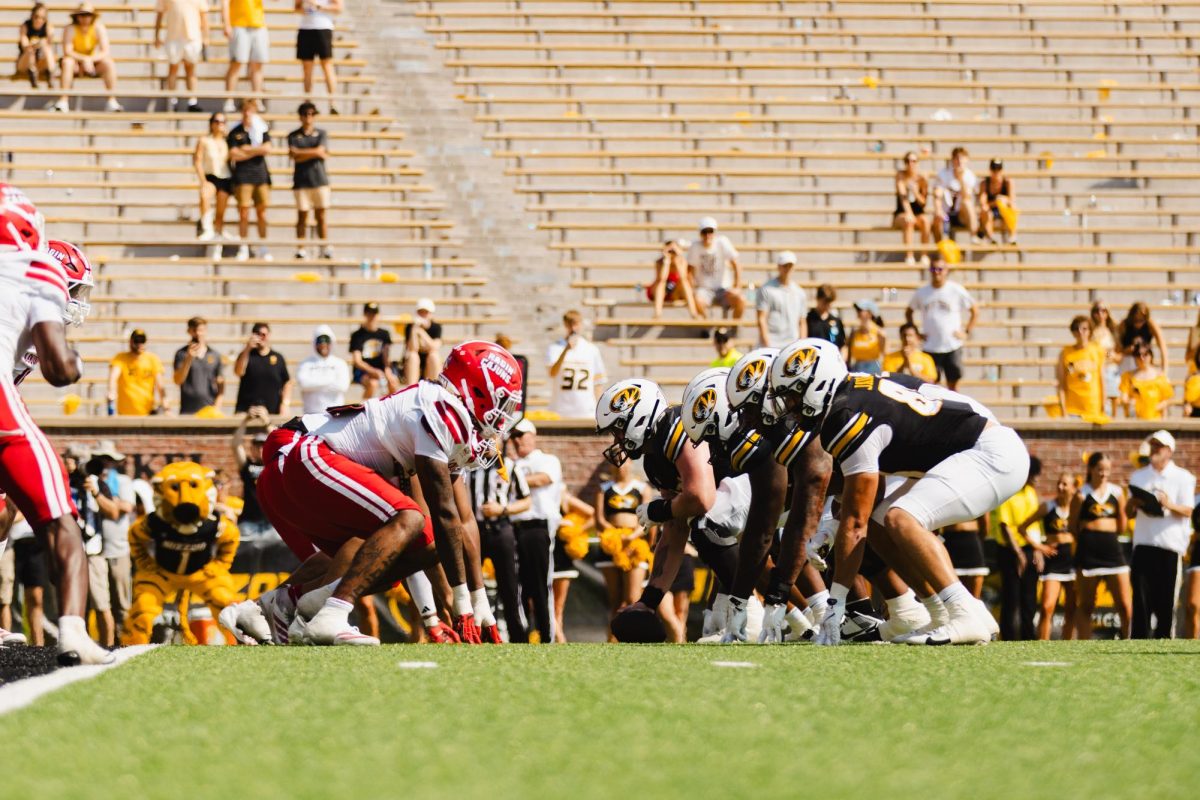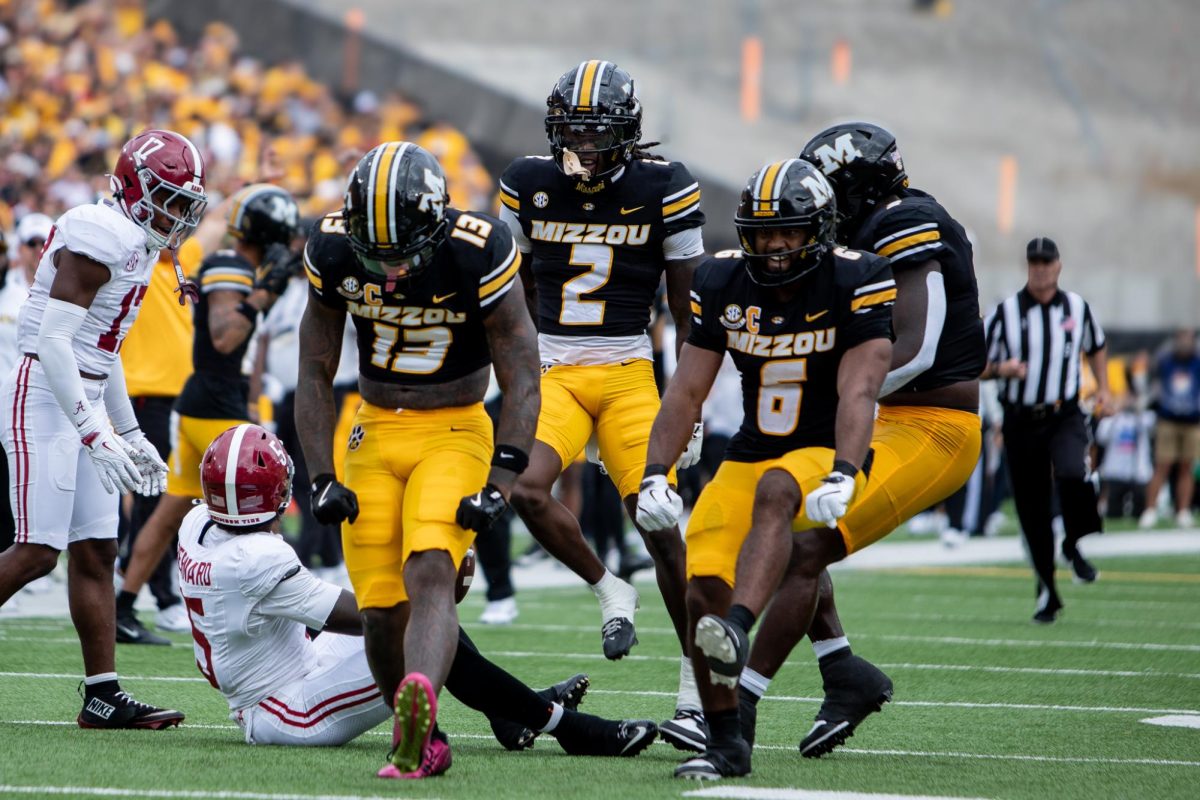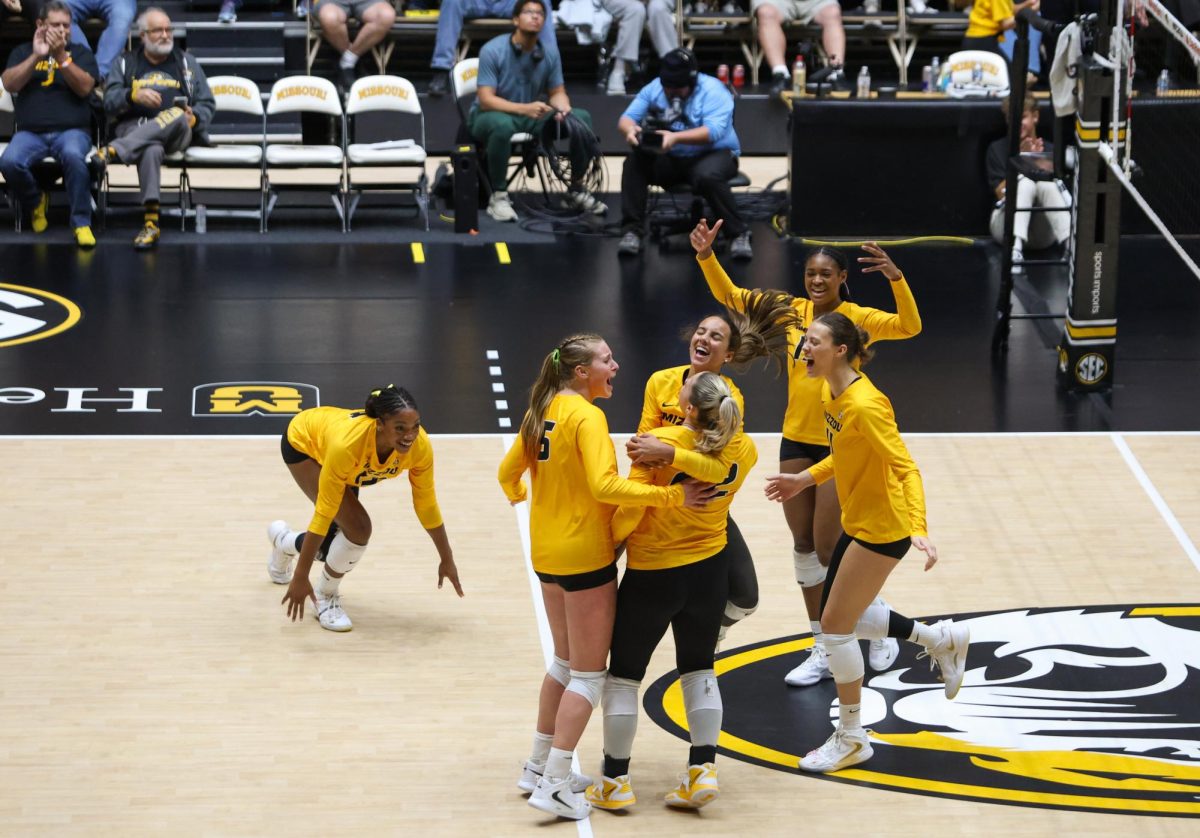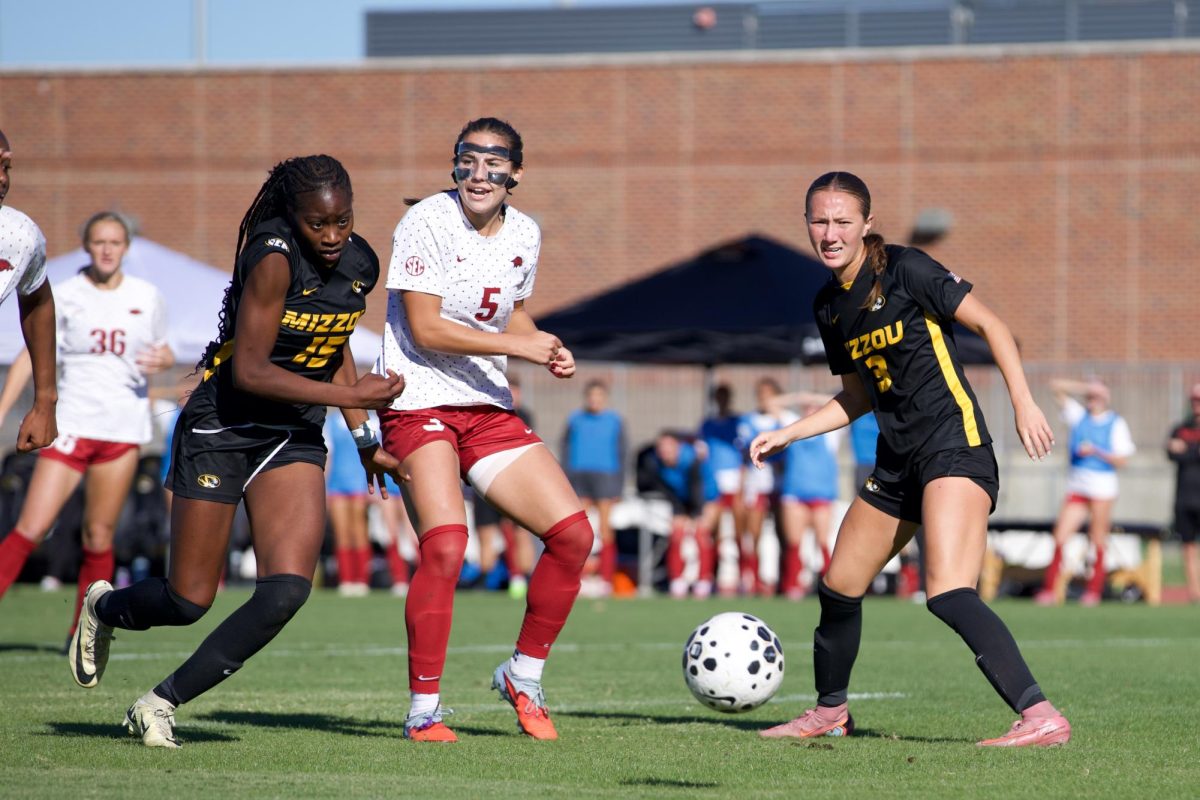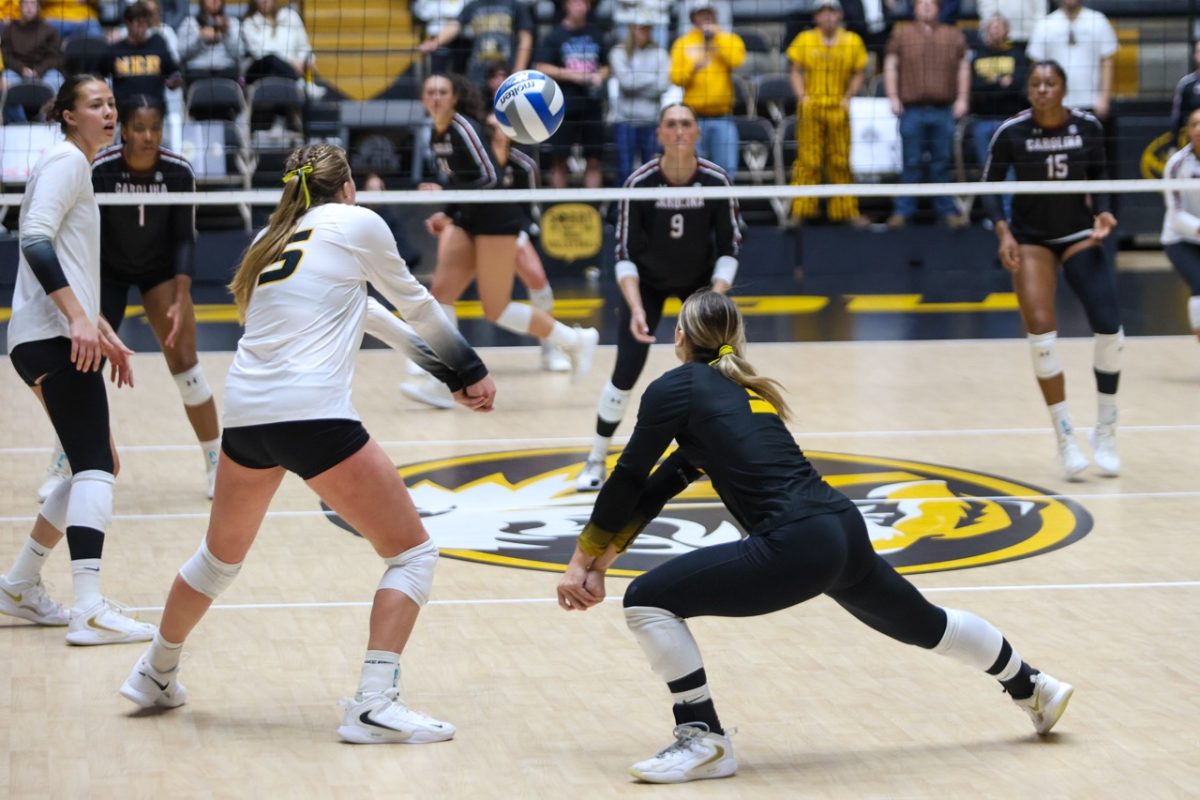About 15 minutes north of Columbia, the Wednesday evening sun inches closer and closer to the farmland-laden horizon that surrounds Hallsville High School, which is located in a small town of the same name. Its football field is largely vacant, save for a modest set of bleachers on the home side and an even smaller one for visiting fans.
The team has gone home after a long practice in the intense mid-Missouri late-summer heat – most of the football team, that is.
Senior long-snapper Nelson Pipes remains on the field, alongside his father Steve Pipes, and a younger teammate, sophomore Alex White, who plays the same position. Both snappers take an equal amount of reps, though Pipes’ are much more consistently on target.
“Get your elbows through,” Steve Pipes says to White. “Don’t push off the ball.”
The adjustments are made, and his next snap shoots into Nelson Pipes’ hands, which don’t move from their position in front of his chest.
“That was perfect,” Nelson Pipes says.
Eventually, they move onto Pipes’ homemade target. It’s comprised of multiple parts: a tall, 4-inch thick purple and white traffic cone on one side and an old, white Hallsville Indians T-shirt zip-tied to a metal stand in order to mimic the height of a punter’s hands on the other.
Pipes puts the ball down 15 yards in front of the T-shirt and takes a step back. He hinges at the hips and bends his knees, with his back completely flat and grabs the ball with his elbows locked out. After a deep breath, he fires his hands through his legs and the ball is out, but it lands almost a full yard in front of his target.
“You turned around as soon as you snapped it,” Steve Pipes says. “You didn’t follow through. If you stop short, so will the ball. Do it again.”
Nelson Pipes doesn’t hesitate. He goes through his routine again, and this time allows the momentum from firing his hips to force him to take three steps back after his initial motion. Sure enough, the ball zooms through the center of the shirt, causing it to flip over the bar that holds it in place.
He turns to his dad and smiles. Even as a senior who has committed to Missouri as a preferred walk-on, the top-ranked long snapper in the state is still shows a willingness to learn from the people who helped him get there.
Throughout Nelson Pipes’ young athletic career, the one constant has been his parents and especially his dad on the football side. Steve Pipes is not only responsible for his son’s avid support of the Tigers, but he was also the one who introduced him to long snapping in the first place.
“He really brought that to me, and I definitely soared with it,” Nelson Pipes said. “My dad has been my coach since seventh grade; we’ve been working on it forever now.”
From an even earlier age than when began coaching Nelson in Hallsville, Steve Pipes raised his son to be a fan of Missouri football.
On a frigid November night at Arrowhead Stadium in 2007, a 10-1 Missouri jumped out to an early lead against its 11-0 rival, Kansas, and did not look back. Then-junior quarterback Chase Daniel was dominant, completing 40 of 49 passes for 361 yards and three touchdowns, and the Jayhawks didn’t muster an offensive attack until it was too late.
“I remember that,” Nelson Pipes said, who attended the game with his family at the age of five. That particular era of Tigers football was especially kind to him, producing fond memories including both that game and the experience of being picked up, tossed over the shoulder and carried by defensive tackle Ziggy Hood at a signing day event.
“All the other kids were chasing us, and we were just having a good time. It was just a really fun experience,” Nelson Pipes said with a chuckle. “I was so little, and he was so big.”
Pipes’ background as a die-hard Missouri football fan made it an easy decision when Missouri’s special teams coordinator Andy Hill offered him a spot as a preferred walk-on on July 27. He was on his way to Indianapolis, Indiana, for a Wilson-sponsored national kicking camp when Hill called Hallsville coach Justin Conyers.
“They turned around and drove five hours back, because coach Hill had told me that he really wanted to take a look at Nelson at camp,” Conyers said. “He ended up getting that walk-on offer. I thought that was awesome.”
“When [Conyers] told me and my dad the news, our mouths just dropped,” Pipes said. “We were shocked at first, but then it turned into excitement.”
He impressed during his subsequent visit to Missouri’s camp, and his hopes became reality shortly after.
As it turns out, Hill had his eye on Pipes before his own high school coaches did. Conyers and his staff are in their first year running Hallsville’s program, and one of his assistants, offensive line coach Mike Morris, got a heads-up from Hill about the future Tiger before he met Pipes in person. Morris played at Missouri from 1994-97, where he developed a connection with Hill, who’s been coaching for 23 years.
“I was at a Mizzou football clinic for high school coaches and I ran into coach Hill,” Morris said. “I talked to him a little bit and he was like, ‘Hey, why don’t you take a look at this Nelson Pipes kid for me? I guess he can snap pretty good.’ All of the stuff coach Hill told me was pretty much true.”
Deciding not to attend Wilson’s national kicking camp in Indianapolis may have helped Pipes earn a spot on Missouri’s 2020 roster, but regularly competing at camps like it was also integral to earning that spot. Specialist camps are crucial, not only for improving a player’s skills but also for name recognition. They provide many of the rankings, star-oriented ratings and scouting reports, on which many schools rely for information.
One of the more popular camps, Kohl’s, has Pipes ranked 41 in the country with a rating of four and a half stars.
“Pipes has great potential and the ability to snap with power and control. At the Kohl’s Underclassman Challenge, he scored on over half of his charted long snaps,” reads the report on the website. “Pipes has all the tools you want in a snapper and will continue to get better as he refines his mechanics.”
Kornblue – a more exclusive camp, accepting only those who they deem one of the 50 best in the country – is even more enthused with Pipes. In their eyes, he is a five-star recruit and the fourth-best snapper in the country, at least among his graduating class. Each camp involves competing against what ranges from 50 to 300 of the best snappers — sometimes punters and kickers as well — in the country.
“I’d say they got me to where I am today, because I’ve always wanted to be the best,” Pipes said. “They’ve definitely pushed me, because I’ve always loved competition. I live for it.”
Competition usually involves the only element of long snapping that can be quantified: speed. Each long snap, whether it be in a game, a practice or a specialist camp is timed from the snapper’s hands to the punter’s hands, traveling about 15 yards. Pipes generally hovers around the .69 to .72 second range, with a personal best of .68. By comparison, Brady Weeks and Seth Mackellar, this year’s participants in the Under Armour All-America game, average .65 and .66, respectively.
“I got to see [Pipes] snap right whenever we first started working out in the summertime, and I’ve been around the high school game for 16 years, and his timing – getting the ball back there – is just impeccable,” Conyers said. “He can get it back there super fast, and it’s always accurate. The ball never navigates beyond right in the middle of the numbers on the punter.”
Pipes has attended camps in many cities, including Chicago, Las Vegas, and Canton, Ohio. None of them are a short drive away from mid-Missouri, which creates one of two hurdles that Pipes had to jump in order to earn a Division I opportunity. Someone has to drive or buy plane tickets, as well as pay for the camps, which makes it impossible for Pipes to have made it this far without commitment from his parents.
“My dad drives me everywhere, and my mom helped pay for the camps,” Pipes said. “I couldn’t have done anything without them, for sure.”
Pipes’ father pointed out the second hurdle.
“Most of the guys who are in the top 10 as a long snapper – they just snap. They don’t play any other position. Maybe third-team wide receiver or something like that,” he said.
In addition to long snapping, Pipes plays defensive end, and he made the switch from starting center to blocking tight end for his senior year. While most elite long snappers spend each practice taking hundreds of reps off to the side, Pipes spends them working on learning a new position and mastering the club-swim move that got him two sacks and a forced fumble in Hallsville’s opening night victory by a score of 40-0 over Father Tolton.
“I use that on special teams, too,” Pipes said. “If I have a guy trying to block me, I’ll just hit their arms down and swim right over them.”
Pipes gets his daily reps elsewhere, whether it be in frequent post-practice sessions or in his backyard. The latter is home to his target, which he and his father built in his sophomore year. However, Steve will often bring it to the practice field.
With a new coaching staff coming in, much of Pipes’ attention has not only been on learning a new position on offense, but also learning a new scheme on both sides of the ball. Coaches have lauded his work ethic on both the physical and mental side of doing so while maintaining his prowess as a specialist.
“Kid’s got a great motor. He’s just non-stop, go, go, go,” defensive line coach Travis Kinkade said. “It’s just a lot of repetition, and obviously with repetition comes confidence, and confidence bring speed, and Nelson is doing a really good job at getting better at all of it.”
When Kinkade was asked if he thinks that Pipes’ commitment to long snapping affects his performance at defensive line, he answered without hesitation.
“I don’t think it does at all,” he said.
“He’s definitely that kind of leader that will show the younger kids that kind of aspect of being a good teammate, working hard, coming early, staying late,” Morris said. “He’s that kind of kid that wants the program to be better.”
The work has paid off. Come late August 2020, Pipes will be suiting up for the team he grew up watching.
“It’s my dream school, for sure. I always remember walking out to the stadium and everyone chanting the M-I-Z Z-O-U, and I said I want to be on the field, and I want to experience that.”
_Edited by Emily Leiker | [email protected]_



